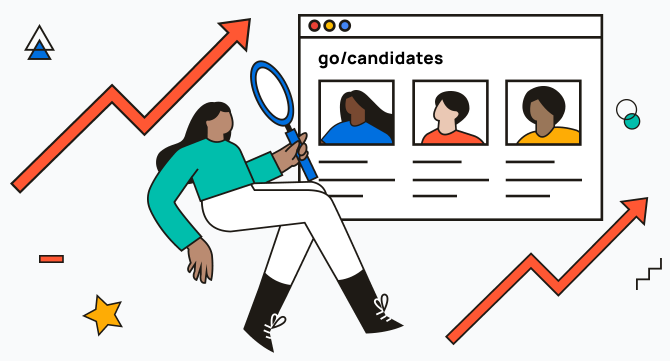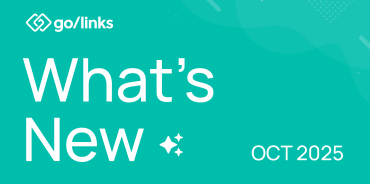“We need to start thinking about scaling our company.”
As a recruiting leader, I get “uncomfortably excited” to hear these words. These two words were commonly used by Larry & Sergey at Google when I worked there, to indicate that any new exciting endeavor should include some level of discomfort or we’re not stretching ourselves enough.
I’ve felt uncomfortably excited about scaling a few times in my career, both as a recruiter and while leading teams, and both instances bring on images of putting on running shoes to get ready for a sprint….and possibly a marathon. It’s a little uncomfortable because you, your team (well the one that you need to start building quickly), and everyone in the company are about to enter a race in the war for talent. But it’s also exciting because you and everyone in the org will be playing a pivotal role in the growth of the company, and we all know it’s going to be one turbo-charged race.
I am lucky enough to have joined GoLinks during its seed stage. It’s allowed me to work closely with the team to begin creating our hiring infrastructure and philosophy early on for our fully remote environment, figuring out how we can customize a recruiting strategy and infrastructure that will allow us to hire successfully, fitting our specific culture and needs.
Below are a few of the areas that we’re focusing on to prepare for post Series A growth. We’re gearing up and excited to start the sprint.
Hiring culture starts at the top
It’s likely that you’ve heard the phrase, “everyone in a company is a recruiter.” This is normally the case because we’re all representatives of our company no matter where we go and whoever we’re talking to. During a growth stage, this philosophy takes on an additional meaning when all hands must be on deck because time invested in hiring is absolutely necessary for scaling.
The hiring culture starts at the top, with the founding team and executives. The most successful hiring I’ve seen have been on teams where hiring managers spend a good chunk of their time on recruiting, from having coffee chats with passive candidates, sending outreach emails, and hosting, or speaking at tech talks.
Chris Shaw, VP of Talent Acquisition at Apollo GraphQL, perfectly summarized this when he shared, “Everyone in the company is a recruiter, and hiring managers ultimately must take responsibility for getting their hires in on time. Recruiters can’t push the hiring boulder up the mountain by themselves. That way hiring becomes a shared responsibility with recruiting and hiring managers.”
The business has to be motivated to hire. Our Founder is our #1 recruiter, our hiring managers will be writing a lot of job descriptions, and many of our team members have been warming up interviewing while others are to be trained. Full engagement is needed throughout our company to be successful, and because no one is left behind in the war for talent, we’ve established the following hiring culture resources via — what else but — go links. For those not familiar with our company GoLinks, we improve productivity by helping teams find and share information fast with intuitive, secure, and memorable short links called go/links. Below are a few examples for hiring go links for our team:
- go/values – to help guide our interviews, evals, and decision making
- go/slack – to announce new job openings
- go/careers – where our team and external candidates can view our open roles
- go/referral – where employees can directly submit referrals
- go/tandem – where employees can connect over video to ask hiring questions
Develop structured and repeatable recruiting processes
One of the things that attract many of us to startups is its fast pace and the ability to build something from the ground up. There’s not much in place, little structure, little processes, which in turn allow us to be more flexible as we create, fail, recreate, fail, iterate, launch, create again. It’s a quick and evolving cycle with lots of learning along the way.
When it comes time to scale though, we need to start moving away from that flexibility towards establishing more standardized, structured, and repeatable processes – so that we can continue to move quickly at higher volume. And when proposing new ideas and processes, discussing it in advance with the people that they’ll impact is a must. It’s going to help in building something that’ll work better, stick better, and provide for a smoother transition.
Although no longer a startup these days, Reddit recently had a hiring resurgence and Drake Ong, Head of Tech Recruiting, was hired to scale up their tech organization. When scaling, one of Drake’s top priorities is to make sure that there is “an established recruiting process that is agreed upon by Recruiting and the Business teams.”
With established processes and buy-in from the business, we can avoid wasting time recreating the wheel when everything’s operating at 10x speed and 10x volume. Our resources and go links in this area include:
- go/recruiting-playbook – resource of our recruiting best practices with standardized processes for hiring efficiency and to provide an exceptional candidate experience
- go/job-template – plug and play framework for managers to create job descriptions
- go/interview-training – to help calibrate our interviewers with best practices for interviewing and evaluation, and being aware of unconscious bias
- go/scorecard – candidate attributes that we consider to be important for every role in our company

Leverage automation, with personalization
When we think about automation, we think about AI or robots replacing people and in an industry that’s centered around people, it may sound a little scary to automate hiring. It’s nearly impossible to think that recruiters are replaceable in this day and age when recruiting is so nuanced and the human connection and personalization is more meaningful than ever. Automation here is about having the right software stack for our hiring needs, and leveraging the tools that we have to work for us.
I may be a bit biased, but when it comes to having the right software stack, GoLinks ranks at the top alongside our CRM and ATS software as necessary hiring tools. Scaling is all about speed and efficiency, and I leverage go links everyday to get me to the resources that I need, quickly and intuitively. I use go links almost every time I open a new tab to get to the resources I need immediately, and I can easily share my go links with my coworkers over video or Slack so they can access the resources quickly themselves. In recruiting, we sometimes deal with confidential information so I can also hide go links that I create or lock access to these resources with unlisted go links. And once the go links are created, I can group them into categories and tag them for easier search in the future.
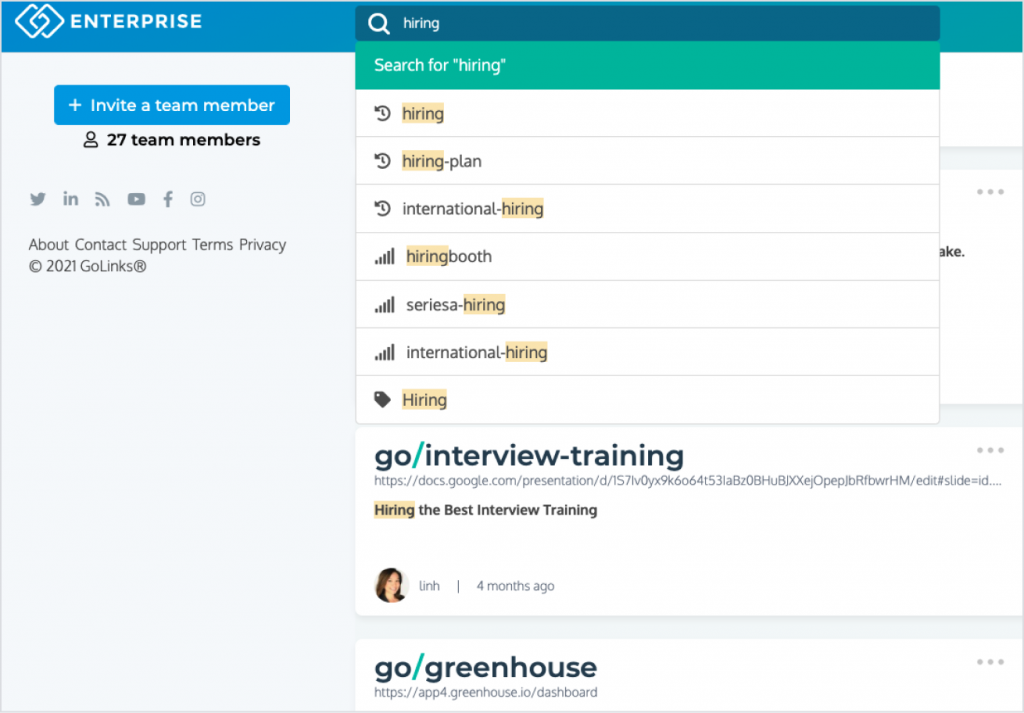
Other than using GoLinks, we leverage automation with our CRM and ATS tools as well. We begin by setting the company description, benefits, and perks in Greenhouse to populate in every job description. Roles can be set to automatically populate to certain job boards or social networks. We also set up automated reminders for interviewers to complete their scorecards in a timely manner. There are plenty of ways that we can use go links and our tools to work for us and below are just a few:
go/gem (crm)
- go/gem-projects – to create and access our sourcing projects
- go/gem-sequences – to create and manage outreach campaigns
- go/gem-stats – to view and assess outreach stats
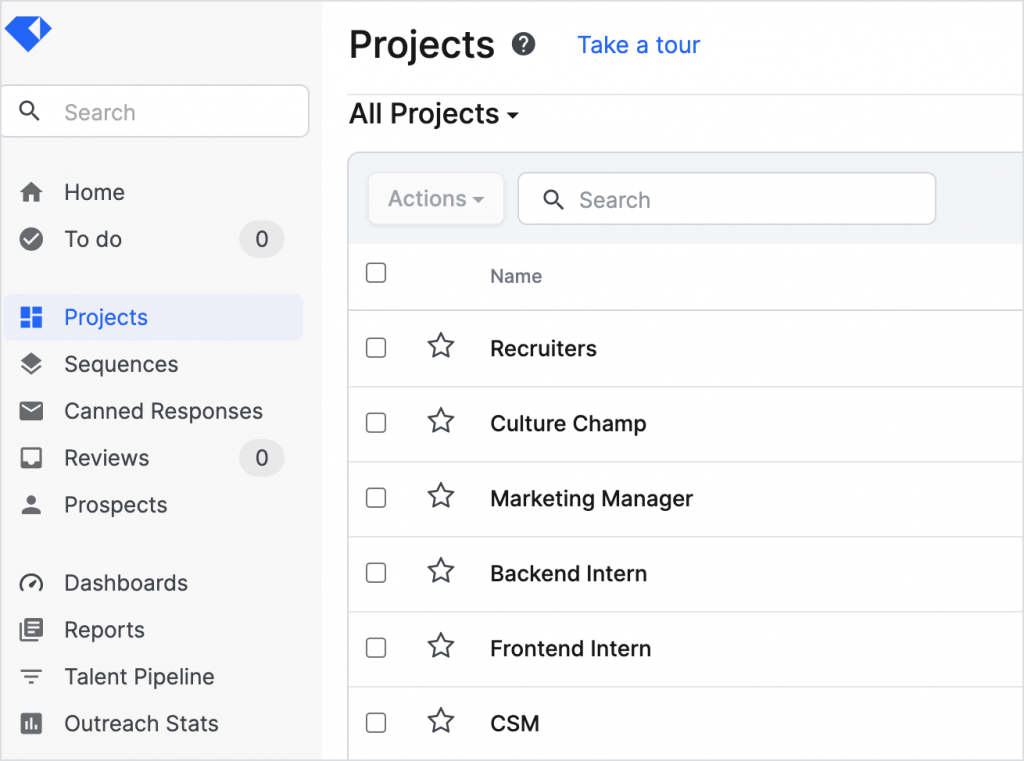
go/greenhouse (ats)
- go/candidates – to view a dashboard of active candidates, per access rights
- go/gh-templates – to create templates for every stage in the hiring process
- go/gh-pipeline – to view hiring throughput and bottlenecks, per access rights
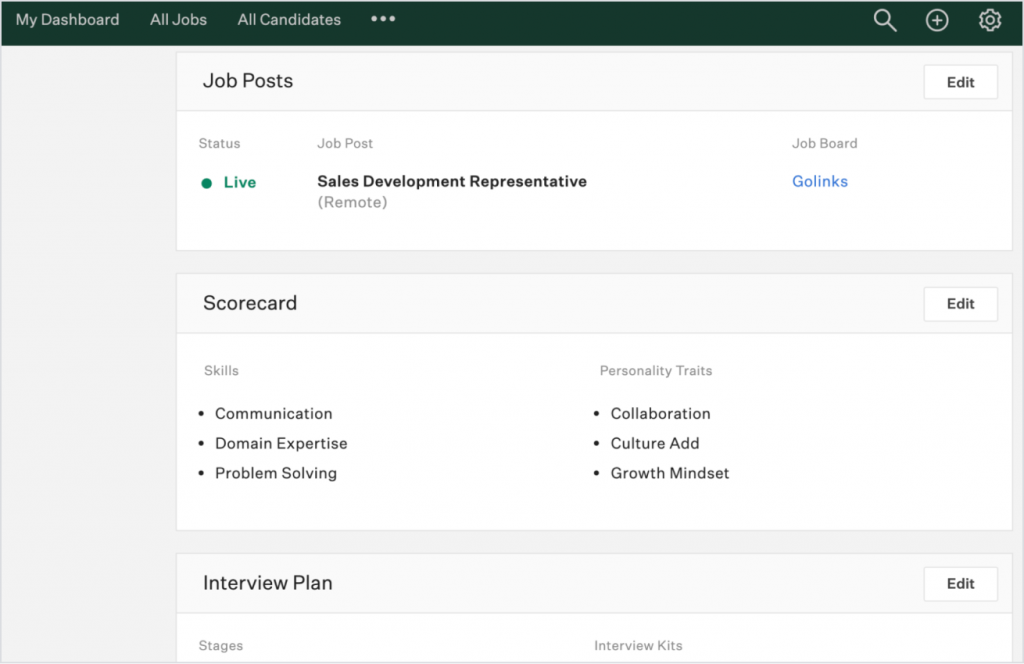
It’s easy to forget about personalization when you’re optimizing something, so the balancing act here is to make sure that we’re adding personal details in our outreach sequences, connecting by phone or video, and of course, calling a candidate to share feedback when that person has invested time into our process. As much as tech, templates, and data can help us be more productive, we’re all humans at the end of the day and that personal touch makes a difference.
Build a rockstar recruiting team
Last but definitely not least, critical for scaling is to build a strong recruiting team – at the foundation a recruiting coordinator who can seamlessly and urgently take care of candidate and interviewer logistics, sourcers who can deliver a strong funnel of directly-sourced candidates, and recruiters who can effectively partner with hiring teams and manage candidates from all hiring channels. When scaling, all channels need to be firing on all cylinders, and it’s the recruiting team that will be starters in the sprints. This team is the first face of the organization and the glue that holds all things hiring together.
Our one-stop go link for growth hiring is go/series-A-hiring. This is where we organize and plan our anticipated headcount, open roles, channel contributions, interviewers, capacity plan for hiring and more. Speaking of hiring, we’re building our rockstar recruiting team!
- go/sourcing-lead 👉 WE’RE HIRING!
- go/sourcers 👉 WE’RE HIRING!
- go/dni-sourcer 👉 WE’RE HIRING!
- go/jd-recruiters 👉 WE’RE HIRING!
- go/jd-rc 👉 WE’RE HIRING!
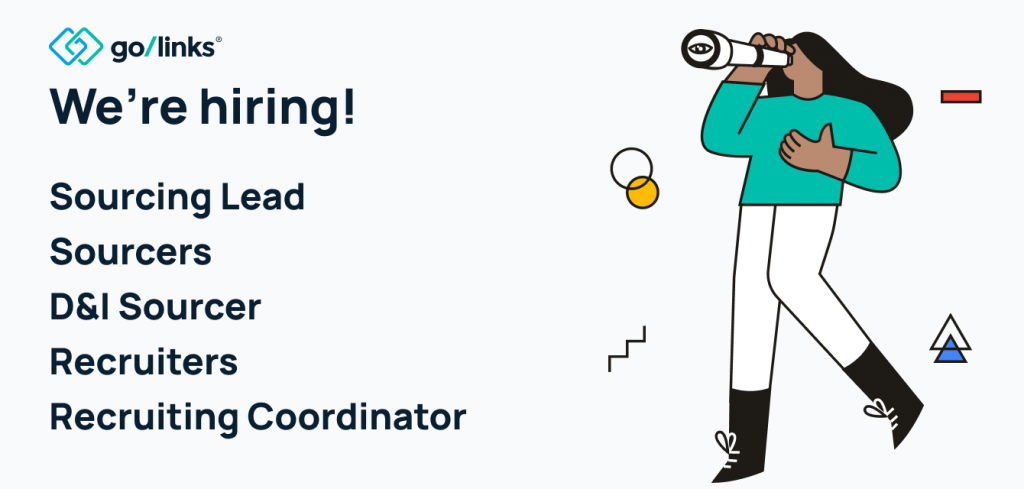
There’s obviously a lot to think about for scaling. It can be exciting, demanding, challenging, and fun. We’ll need to keep the hiring engine going at full speed, but we also have to think about how we can best maintain our hiring bar, candidate experience, and the company culture of a smaller and more connected team. These are all “uncomfortably exciting” challenges for us in the next stage of our company and we’re ready for the signal 🏁
Want to see how easily GoLinks can be used to meet your recruiting needs? Learn how GoLinks Enterprise can help you effectively recruit at scale.
Access and share resources instantly with GoLinks
Try for free
We’re also hiring! Check out our careers page.
